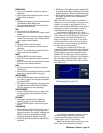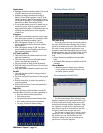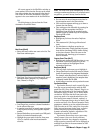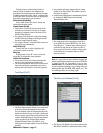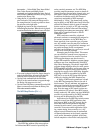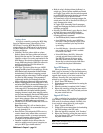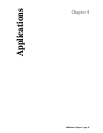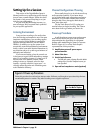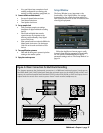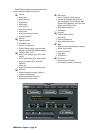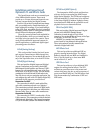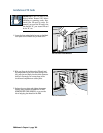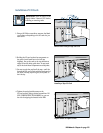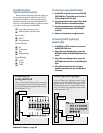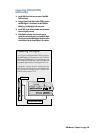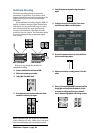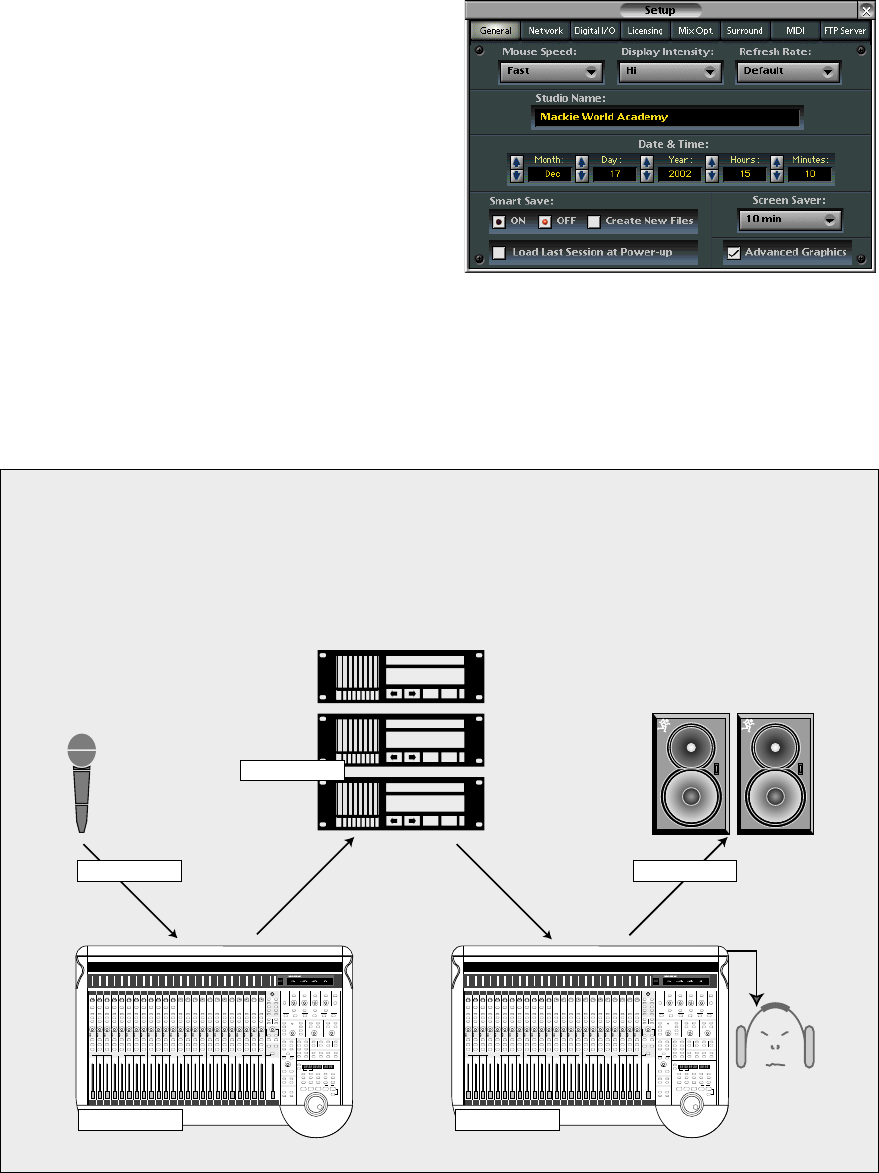
D8B Manual • Chapter 4 • page 97
• It’s a good idea to keep a snapshot of each
working configuration as a starting point:
tracking, overdubs, symphony, grunge band, etc.
❏ Connect all mics and instruments
• Be sure all channel faders are down.
• Turn Master Fader down.
• Turn Speaker level down.
❏ Set up sample clock
• Verify consistent sample rate settings
throughout all digital multitrack recording
devices.
• Word clock and digital data transfer
connections are very important to the
efficiency and functionality of any digital
system. Verify them.
• Most systems work best when the D8B is the
Master word clock source. Use the Apogee
Clock I/O card to send word clock to slave
devices.
❏ Turn amplification system on
• Wait until all other gear is powered up before
turning on the monitor system.
❏ Enjoy the creative process
Setup Window
The Setup Window is very important to the
functionality of the Digital 8•Bus. Its settings
determine how the console functions within its
own architecture as well as how it interfaces with
other digital equipment.
Follow the checklist on the next page to verify
that each Setup Window parameter is intentionally
set. For specific recommendations for various
parameter settings, refer to “The Setup Window” on
page 64.
Figure 4-2 Basic Connection for Multitrack Recording
This diagram represents the fundamental connections in a D8B-based multitrack system. Sound sources
feed Fader Bank 1 (MIC/LINE); Fader Bank 1 feeds the multitrack inputs via the AIO•8, DIO•8, or ADAT card
outputs; the multitrack outputs feed Fader Bank 2 (TAPE) via the AIO•8, DIO•8, or ADAT card inputs; the mix
output feeds the control room monitor system, master 2-track recorder, headphones, etc.
Audio Source
Multitracks
To Monitors
Fader Bank 1 Fader Bank 2



